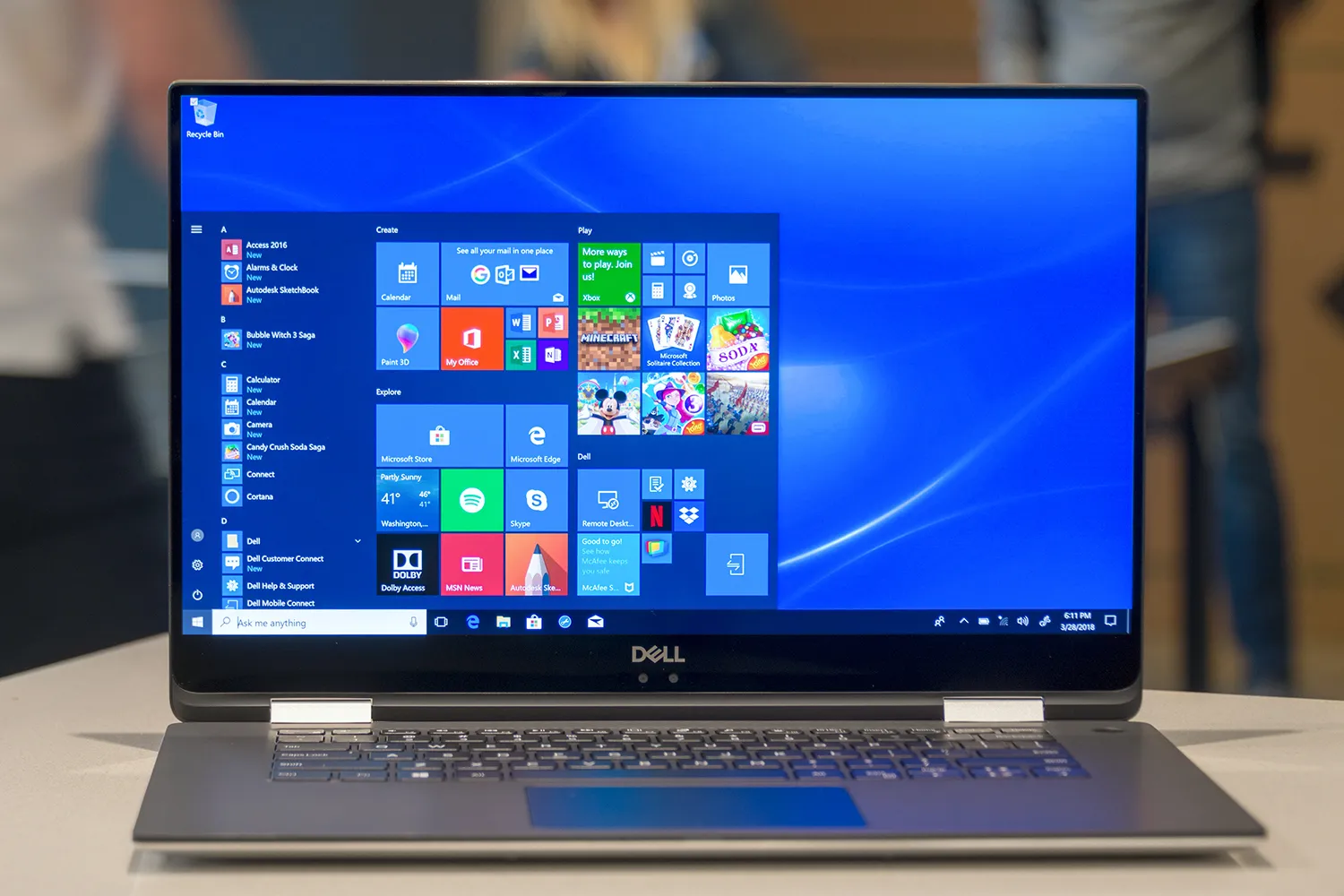The Key Differences Between Windows 10 Home vs. Pro vs. S Mode – Which Version is Right For You?
Microsoft’s latest operating system, Windows 10, is available in several different editions aimed at distinct types of users. The three most common options consumers encounter are Windows 10 Home, Windows 10 Pro, and Windows 10 in S Mode. But what exactly sets these versions apart?
This comprehensive guide examines the key distinctions between Windows 10 Home, Windows 10 Pro and Windows 10 S Mode editions. We’ll compare and contrast features, usage scenarios, system requirements and more, so you can determine which OS configuration best aligns with your personal or business needs.

Windows 10 Home vs. Pro vs. S Mode: Feature Comparison
While all three editions share a common Windows 10 code base and user interface, under the hood they provide varying functionality, security protocols and hardware/software customization capabilities.
Here’s an overview of the notable features included in each Windows 10 variant:
Key Features – Windows 10 Home
The consumer-focused Windows 10 Home edition offers core OS abilities plus select extras for mainstream users, including:
- Starts at $139 standard retail pricing for individual unit licenses
- Recognizes touch, pen and voice inputs for natural control
- Integrates web search directly into the taskbar for quick access
- Supports Universal Windows Platform (UWP) apps from the Microsoft Store
- Video game broadcasting via Microsoft’s built-in Mixer service
- New “Quick Assist” feature for easy remote support and troubleshooting
- Dynamic lock screen images with Spotlight-like daily refresh
- Standard BitLocker device encryption for data protection
- Fast boot times and efficient energy usage for better mobility
- Optional Cortana voice assistant integrates across apps and services
- Built-in Windows Defender antivirus software protection

Key Features – Windows 10 Pro
Stepping up to the mid-range Pro edition unlocks a slate of advanced capabilities suited for professional and small business environments, like:
- Starts at $199 standard retail pricing for individual licenses
- Supports Hyper-V technology to run virtual machines locally
- Adds enterprise-grade security mechanisms for data safety
- Provides Remote Desktop Connection hosting abilities
- Enables Windows Update deferrals to delay major upgrades
- Unlocks Azure Active Directory and Intune mobile device management integration
- Permits AppLocker control over internal software usage
- Allows BitLocker encryption across entire volumes, not just boot drive
- Adds Windows Defender Credential Guard sign-in protections
- Supports up to 2 physical processors with maximum 2 TB of RAM
- Provides access to the “Assigned Access” kiosk mode to lock down profiles
Key Features – Windows 10 S Mode
The most lightweight edition, Windows 10 in S Mode, makes some tradeoffs for improved performance, focus and security:
- Only available pre-loaded on new devices as an OEM edition
- Apps can only be installed through the Microsoft Store
- Enhanced boot & run speeds for an instant-on experience
- Automatically configured for optimal battery conservation
- Always keeps devices updated with latest features/fixes
- Blocks the Edge browser from accessing dangerous websites
- Provides a streamlined interface putting key apps front & center
- Permits access to Microsoft 365 and all UWP applications
- No support for running win32/legacy desktop programs
- Cheaper introductory pricing on low-cost systems
- Switch out of S Mode is quick, free and one-way only
Now that we’ve outlined the unique selling points of Home vs. Pro. vs. S Mode, let’s explore some example use cases where each Windows 10 variant makes the most sense.
Ideal Usage Scenarios
Because the three consumer-focused editions prioritize distinct features and functionality, they naturally align better for certain environments and user needs.
Windows 10 Home Use Cases
The flexible Windows 10 Home OS generally works well for:
- Mainstream personal computing by students, families and individuals
- Entertainment systems for gaming, video streaming and web access
- Standard home office use like running Office apps and browsing the web
- Touchscreen tablet devices used loosely for apps and media
- Backing up photos, music and files to the cloud for household access
- Managing basic budgets, expenses and personal organization
- Controlling Smart Home devices like lights, thermostats and appliances
- Shopping online, connecting via social media and chatting over Skype
- On-the-go professionals needing only basic remote business features

Windows 10 Pro Use Cases
Meanwhile, Windows 10 Pro better accommodates:
- Standard business workstations used for office productivity
- More advanced home office setups with remote access needs
- Point-of-sale devices like restaurant cash registers
- Digital signage systems showing menus, ads and dashboards
- BYOD environments with mixed personal and corporate apps
- Dev/test platforms for running virtual machines locally
- Remote desktops accessed securely via VPN connections
- Data analysis and number crunching workloads
- Line-of-business software with high security requirements
- Large-scale network deployments across multiple locations
- Startups and small companies with limited IT resources
Windows 10 S Mode Use Cases
Lastly, the curated S Mode interface aligns well with:
- K-12 student laptops focused solely on schoolwork
- Public browsing stations in libraries and community centers
- Kiosks designed specifically to run one dedicated app
- Digital whiteboards for meetings and presentations
- Tablets made primarily for content consumption
- Young kids’ first-time computers with parent controls
- Locked-down systems shared by multiple guest users
- Budget convertible notebooks focused on portability
- Integrated IoT and smart devices running UWP apps
- Backups or secondary devices with minimal requirements
Now let’s shift our attention to the system specifications supported across editions.
Windows 10 Versions: Minimum System Requirements
Alongside differences in features and target usage instances, Windows 10 Home, Pro and S Mode also vary in their baseline hardware prerequisites.
Here’s an overview of the minimum specifications required to install and run each OS variant smoothly:
Windows 10 Home
- 1 GHz processor (2 GHz or faster recommended)
- 2 GB RAM (4 GB or more recommended)
- 32 GB storage (64 GB or larger recommended)
- 800×600 display with DirectX 9 support (higher resolution preferred)
- Compatible graphics card meeting WDDM 1.0 specs
- Multi-touch display for touch interactions
Windows 10 Pro
- 1 GHz processor (1 GHz with 2+ cores or faster recommended)
- 2 GB RAM (4 GB or greater recommended)
- 32 GB storage (64 GB or higher recommended)
- 800×600 display with DirectX 9 support (higher resolution preferred)
- Compatible graphics driver meeting WDDM 1.0 specs
- Additional RAM/HDD may be required for add-ons like Hyper-V VMs
Windows 10 S Mode
As a pre-installed OEM edition only, systems will meet at least the baseline Home/Pro hardware specs above. Many S Mode devices utilize low-power mobile processors and integrated graphics well-suited for efficient UWP apps and lighter workloads.
For those with aging desktops and laptops, both Windows 10 Home and Pro support 32-bit Intel/AMD x86 processors for broader compatibility with older non-64-bit capable chips released over the past decade-plus.
However, for an optimal experience – especially when multitasking or running demanding applications – choosing device hardware at or above the recommended specs is wise.

Upgrade Paths and Switching Between Modes
While Microsoft permits reasonably fluid movement between some editions, other routes are strictly one-way streets. Let’s break down the allowed (and prohibited) transition pathways when shifting Windows 10 to other configurations.
Supported In-Place Upgrades
- Windows 10 Home -> Windows 10 Pro
- Windows 10 Pro -> Windows 10 Enterprise
- Windows 10 S Mode -> Windows 10 Home
- Windows 10 S Mode -> Windows 10 Pro
These roads permit direct in-place upgrades preserving all apps, settings and data. For example, moving from Home to Pro or escaping S Mode intact.
Blocked Downgrades
- Windows 10 Pro -> Windows 10 Home
- Windows 10 Enterprise -> Windows 10 Pro
- Windows 10 Enterprise -> Windows 10 Home
- Exiting Windows 10 S Mode
Microsoft intentionally prohibits stepping back down from higher to lower SKUs, largely related to maintaining expected feature availability like with certain Professional tools.
Likewise, once departing the streamlined S Mode environment, you cannot return. The exit is intentionally permanent to prevent unexpected app or configuration losses.
For those cores reasons, it’s prudent to carefully weigh the longer-term workflow (and security model) implications before traveling a one-way trip to Pro or beyond S Mode.
Bottom Line
When comparing Windows 10 Home vs. Pro vs. S Mode, Microsoft’s mainstream consumer and professional editions share the same underlying platform foundations while diverging in purpose-driven features, system requirements and target usage scenarios. Across the board though, all three focus on faster resume times, extended battery life cycles, simplified interfaces and continual feature expansion through bi-annual upgrades to provide a competitive, versatile environment with long-term support.
Overall, Windows 10 Home works well for traditional home computing needs of students, families and basic home office jobs.
Windows 10 Pro better accommodates small businesses plus technically-adept users wanting advanced controls and customization options.
And the streamlined Windows 10 in S Mode interface offers a lightweight yet secure computing experience well-suited for mobility, education and public access.
So consider how each version maps to your present and future needs, then choose the one that best fits. Because while the underlying code stays the same, the included features and expanded possibilities can differ quite substantially between editions.






